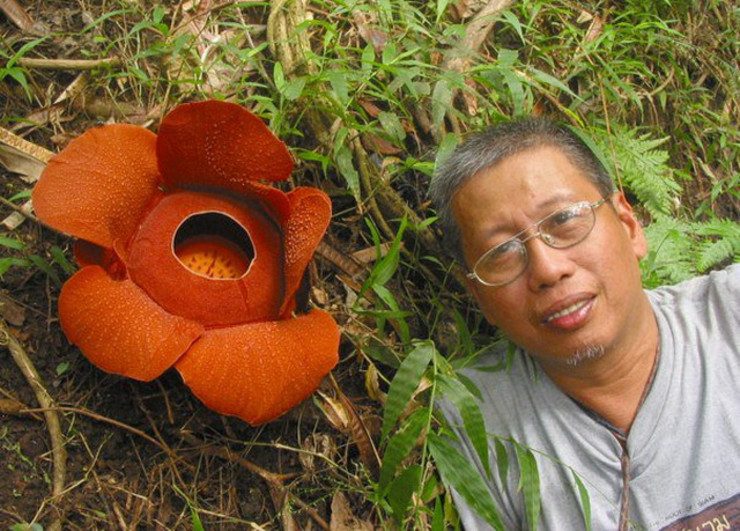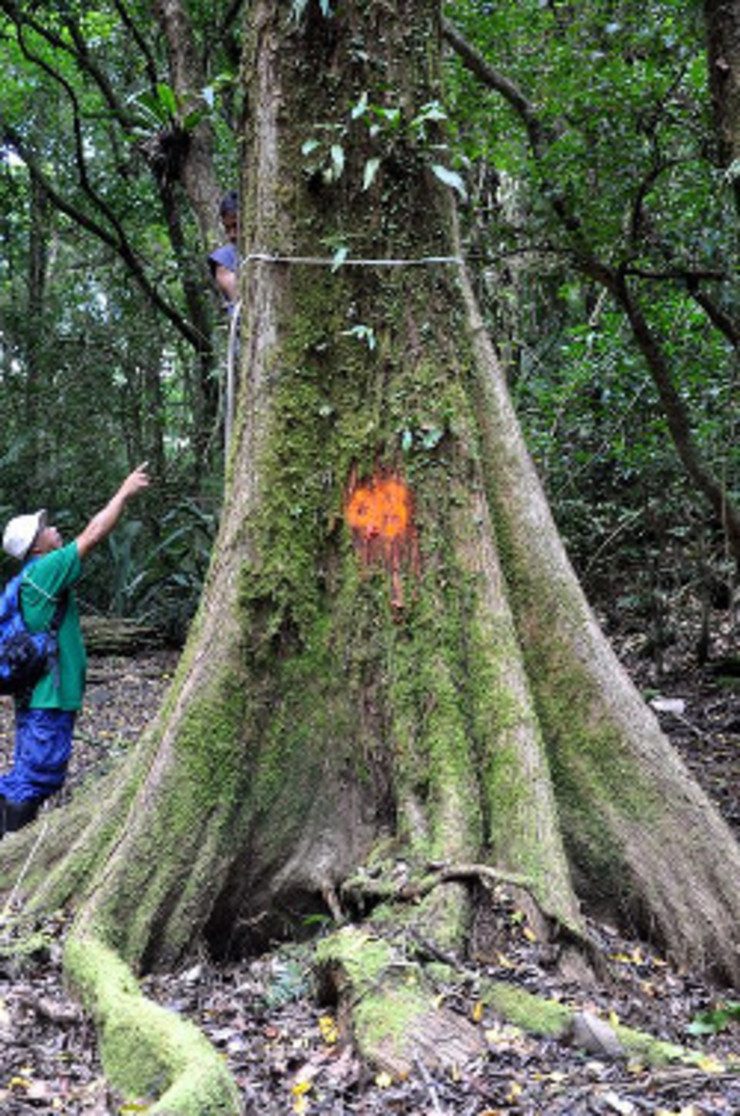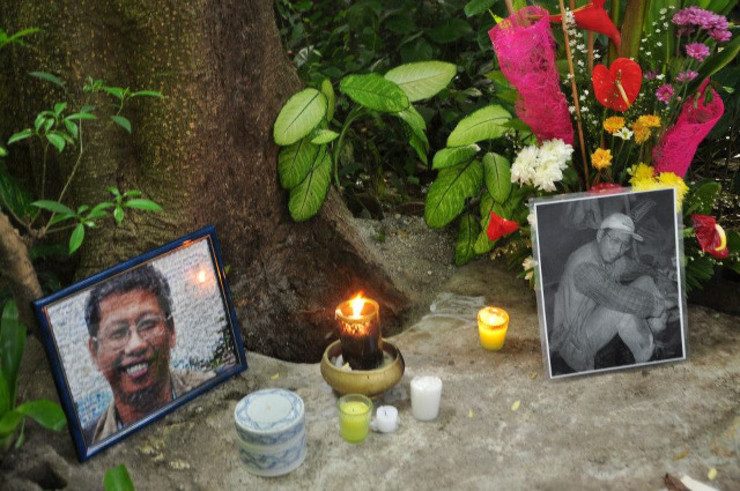SUMMARY
This is AI generated summarization, which may have errors. For context, always refer to the full article.

MANILA, Philippines – Exactly 4 years ago today, a respected Filipino botanist was shot to death with two others while collecting and studying indigenous trees in the forests of Kananga, Leyte.
The fatal bullets came from an infantry battalion of the Philippine Army who had thought Co and his companions were members of the New People’s Army (NPA).
Co’s group was huddled around a possible “mother tree” clutching umbrellas when the shooting began.
Around 20 minutes later, Co was dead with 3 bullets in his body.
“Four years, that’s too long. But I still can’t accept that Leonard is gone,” Co’s wife Glenda told Rappler on Thursday, November 13.
Co’s footsteps may have long disappeared from the forest floor, but the pain of his death drags on for his family and friends.
To this day, there has been no trial on the case and the 9 accused soldiers walk free. Two petitions filed before the Department of Justice (DOJ) and Supreme Court are yet to be resolved, preventing the case from proceeding.
The two petitions are for a petition for review filed with the DOJ and a petition for change of venue filed with the Supreme Court both by the family of Co and the two others who died that November day.
The victims’ family filed for a Petition for Review because they disagreed with a DOJ resolution that recommended the filing of reckless imprudence resulting to multiple homicide and attempted homicide.
It wasn’t reckless imprudence, said Glenda, but murder.
“Two-hundred fifty rounds is a murder,” she said.

The accused soldiers admitted they fired 245 rounds at Co’s group. What’s more, Glenda said one of Co’s companions had pleaded with the soldiers in the midst of the shooting.
“They crouched to the ground. They said, ‘Hindi kami kalaban‘ (We are not enemies). Yet they were still shot.”
With a group, Glenda went to the site of the shooting and stood on the spot where her husband had died. They climbed to the elevated area where the soldiers were said to be positioned. Based on their inspection, the soldiers would have been able to hear Co’s companion.
Pending justice
But the DOJ resolution, dated December 20, 2012, insisted that there is no probable cause for murder because the soldiers acted under “a mistake of fact.”
Because the soldiers thought Co and his team were communist rebels, they “would be justified to engage and, if warranted, to kill their enemies.”
Did Co and his group look like armed guerrillas?
According to one of his surviving companions, forester Roniño Gibe, Co had been wearing a brown vest, black slacks, boots, with Nikon camera, binoculars and lens, and was carrying a packed bag and maroon umbrella.
The others were similarly dressed with two wearing raincoats.
But they were said to have been holding pole cutters – blades attached to a long handle used to prune overhead branches – that may have been mistaken for firearms.
According to Gibe, they did nothing to provoke gunfire from the soldiers as they were, at the time, standing innocently around a tree.
But immediately after the shooting, the soldiers did not claim they had shot the group on purpose. The initial story was that Co and his team were caught in the crossfire between NPA members and the battalion.
But the survivors said there had been no gunshots before they were fired at. Fifteen minutes of loose bullets from the soldiers elicited no responding gunfire from “communist terrorists.”
Only two of the 8 members of the squad claimed to have personally seen the NPA members.
The DOJ’s National Prosecution Services eventually concluded that there was no actual armed encounter with alleged rebels and that Co and his group “were the real targets of the accused and no other.”
Scientists in danger
Co is not the only scientist to have been the victim of violence.
According to Agham Advocate of Science and Technology for the Peoples, there have been at least 3 other cases in the last 3 years.
Only last September 4, engineer Fidela “Delle” Bugarin Salvador was caught and killed during a military operation against revolutionary groups in Lacub, Abra. She had been working as a consultant on socio-economic projects in areas devastated by Typhoon Ondoy and Pepeng.
On October 1, 2013, physicist Kim Gargar was detained by the army for being suspected as an NPA member while doing “rehabilitation study” on Pablo-affected villages in Davao Oriental. He was eventually allowed to post bail because the regional court found testimonies against him to be weak.
On January 24, 2011, veterinarian, environmentalist and journalist Gerry Ortega was shot along a highway in Puerto Princesa. His assassination is thought to be politically-motivated since he had been vocal about the Malampaya gas funds and other environmental issues in Palawan at the time of his death.

Co’s death may have gone unnoticed by those unfamiliar with his name. But his death was seen as a great loss to the scientific community, both local and international.
“No one understood our native forest dynamics the way that he did,” said the Philippine Native Plants Conservation Society in its tribute to the late botanist during a 2011 horticulture exhibit.
“He provided a glimpse into its hidden order, and where one would see just endless green, he would expound on the complex interrelationships between one living thing to another… He is, quite simply, the singular authority on Philippine floral biodiversity.”
At least 3 plant species have been named after Co: a flower of the Rafflesia family, a rare orchid and an endangered shrub or small tree.
But more than being scientists, Co and the other victims were people who left behind family and friends.
Glenda remembers Co as a “responsible and thoughtful” husband who was “too passionate with his work.”
He had once been a grade school student nicknamed “scientist” by classmates because of his early interest in rocks. It was in high school when he first cultivated a passion for plants.
He was a playful father to his only daughter, 12-year-old Linnaea, who he named after a flower.
While the wheels of justice are slow to turn, Co’s family and friends have only his memory to assuage their grief. – Rappler.com
Add a comment
How does this make you feel?
There are no comments yet. Add your comment to start the conversation.